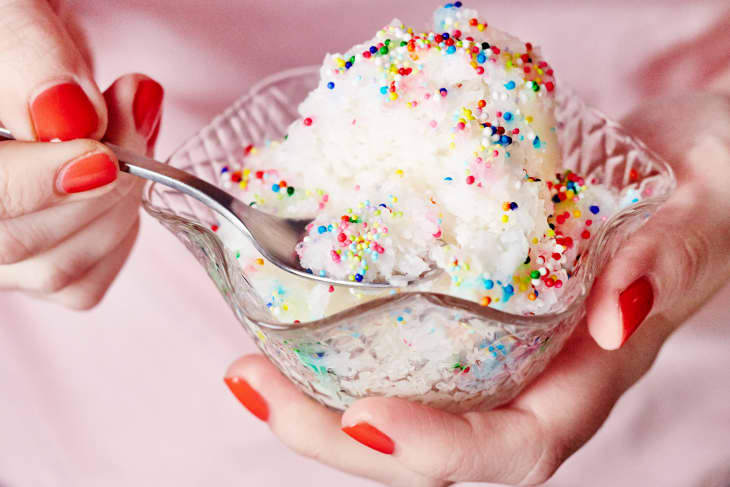Is It Safe to Eat Snow?
Who hasn’t stuck their tongue out to catch falling snow flakes? Eating snow is a childhood rite of passage — just as much as singing about not eating the yellow stuff — but as adults, and as parents to young children, we may have some concerns about whether it is prudent or even safe to eat snow.
The short answer is “yes” — snow is primarily water, after all — but there are a few rules you should follow.
1. Eat later-fallen snow.
As snow falls, it can collect things like sulfate, nitrates, formaldehyde, and mercury depending on when and where and how windy it is. Freshly fallen snow sounds clean, but the first few flurries are actually not the ones you want to eat! That’s because they act as a purifier for pollutants, both in the air and the ground.
Your safest bet? Collect snow for eating after it has been snowing for an hour or two — and avoid eating snow on super-windy days.
2. Collect snow in a bowl.
If you’re planning to eat snow, say for making snow cream or for cooling your fireside Scotch, set a bowl onto your picnic table, deck, or dog house. Not only does a collection bowl eliminate any stray dirt or debris, but the snow in your bowl will also be cleaner. That’s because snow on the ground can mix with everything from fertilizers to pesticides on your grass and driveway. (Never eat plowed snow for this very reason.)
3. Eat a reasonable amount of snow.
Even if you avoid freshly fallen snow and windy-day snow and you use a bowl to collect your snow, your snow is going to contain some amount of pollutants from the air or ground. The good news is that most snow research indicates that snow is still safe to eat in moderation. Our very favorite way to do so? Snow ice cream, of course.
